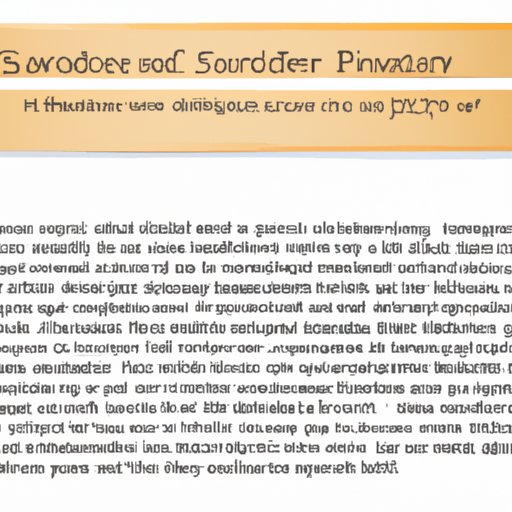Introduction
Writing an effective essay requires careful organization and thoughtful planning. This means that the author must think carefully about the structure of their paper. One of the most important elements of this is the transition between paragraphs. A well-crafted second paragraph can serve to introduce new ideas, provide additional evidence, or even offer counterarguments. In this article, we will discuss various strategies for writing a successful second paragraph in an essay.
Introducing a New Idea or Concept
When crafting the second paragraph of an essay, one of the most important things to consider is whether or not you are introducing a new idea or concept. If so, it is important to explain why this idea is being introduced and how it relates to the main point of the essay. You should also provide some context for the reader by offering a brief overview of the topic. Furthermore, it is crucial to ensure that the transition from the first paragraph to the second is smooth and logical.

Providing Additional Evidence to Support the Main Point
Adding evidence to support the main point of an essay is essential. Doing so helps to strengthen your argument and make it more convincing. When adding evidence in the second paragraph, it is important to make sure that it is relevant to the topic at hand. Additionally, you should be sure to explain the significance of the evidence and how it supports your main point. This will help the reader understand the importance of the evidence and its connection to the topic.
Using a Transition Word or Phrase to Connect the First and Second Paragraph
Using a transition word or phrase is one of the best ways to connect the first and second paragraph of an essay. Transition words and phrases help to create a seamless flow between paragraphs, allowing the reader to move smoothly from one topic to the next. Some examples of transition words and phrases include “furthermore,” “in addition,” “similarly,” and “however.” When selecting a transition word or phrase, it is important to make sure that it is appropriate for the context and that it fits in naturally with the sentence.
Asking a Thought-Provoking Question
Asking a thought-provoking question in the second paragraph of an essay can be an effective way to engage the reader and to encourage them to think critically about the topic. Questions can help to clarify the main point of the essay, as well as to draw attention to certain aspects of the topic. When crafting questions, it is important to make sure that they are open-ended and relevant to the subject matter. Additionally, it is helpful to provide some context for the question so that the reader can better understand what is being asked.

Summarizing the Key Points from the Previous Paragraph
Summarizing the key points from the previous paragraph is another useful strategy for transitioning between paragraphs. This helps to remind the reader of the main point of the essay, as well as to establish continuity throughout the essay. When summarizing, it is important to be concise and to focus only on the most important points. Additionally, you should make sure that the summary is accurate and that it accurately reflects the content of the prior paragraph.
Offering a Counterargument or Alternative Viewpoint
Including a counterargument or alternative viewpoint in the second paragraph can be beneficial in many ways. Not only does it add depth to the essay by presenting multiple perspectives, but it also allows the author to anticipate potential objections and to address them before they become an issue. When presenting a counterargument or alternative viewpoint, it is important to make sure that it is relevant to the topic and that it is presented in a respectful manner. Additionally, it is helpful to provide evidence to support the counterargument or alternative viewpoint.

Quoting an Expert in the Field
Quoting an expert in the field is another effective way to strengthen the second paragraph of an essay. By citing an expert, the author can draw on the expertise of someone who has studied the topic in depth. This can help to add credibility to the essay and to provide additional evidence to support the main point. When quoting experts, it is important to make sure that the quote is relevant to the topic and that it is presented accurately. Additionally, it is helpful to provide some context for the quote so that the reader can better understand its significance.
Conclusion
Starting the second paragraph of an essay can be daunting, but with careful planning and thoughtful consideration, it can be done successfully. Whether you choose to introduce a new idea, provide additional evidence, use a transition word or phrase, ask a thought-provoking question, summarize the key points, offer a counterargument, or quote an expert, there are numerous strategies that can help to make your essay more effective. As you craft the second paragraph of your paper, keep these strategies in mind and you will be sure to write a successful essay.
(Note: Is this article not meeting your expectations? Do you have knowledge or insights to share? Unlock new opportunities and expand your reach by joining our authors team. Click Registration to join us and share your expertise with our readers.)
